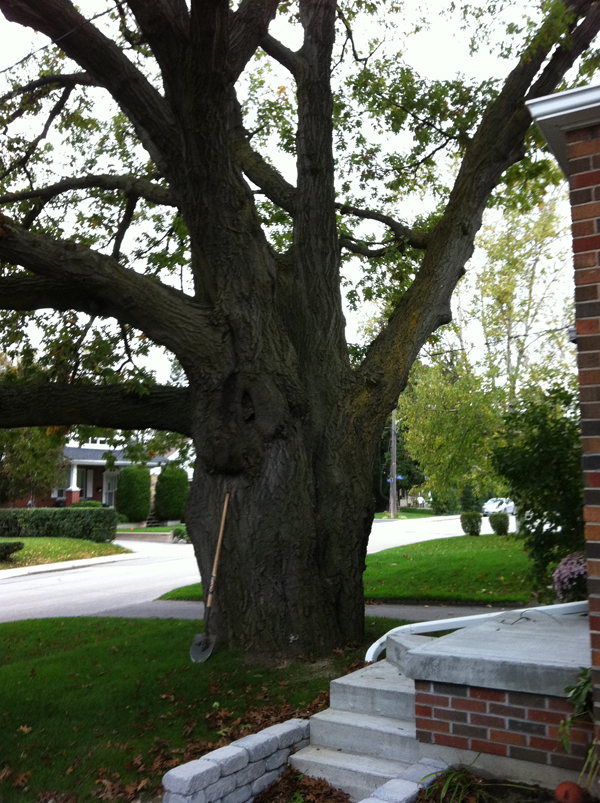Read more from the Spreading Roots conference
Cecil talked about the history of urban forestry in Europe, some of their failures, innovations and where we have to look in the future. One of the biggest ideas that struck me was returning to the ancient tradition of cities being built around forests instead of re-planting the forest around the city. It seems to me that even cities in North America used to be designed like this. When you tour older neighbourhoods, you find “newer” houses surrounded by very mature trees.
My childhood neighbourhood is like this, built around an oak/hickory forest that results in having five very old beautiful trees on the house property. Working with LEAF, I travel across the GTA and witness both sides of this coin. Many older areas of the city that were built in the early 1900s have wonderful canopy cover as a result of building around trees that were already present. But as we move to the newer developments we begin to see areas that have been leveled - all mature trees removed - where we struggle to get new trees in the ground.

How can we change this? Cecil made a good point that everyone, from the foresters and developers to private citizens, must work together. Education is key: spread the word about the importance of the urban forest! He also noted that nothing will change until those making decisions about development know how important the urban forest is to us - even if that means putting a price tag on the benefits urban trees give us.
Cecil is from Denmark where they had extreme rainstorms this past summer that caused massive flooding throughout the city. This flooding could have been avoided were there enough trees, due to their ability to divert storm runoff.
He closed his talk wondering if we will just wait until we are hit by another natural disaster before realizing how important the urban forest is. I live with the hope that there are enough of us out there to drive urban forestry back to being a major focus of city development, instead of just an afterthought.
